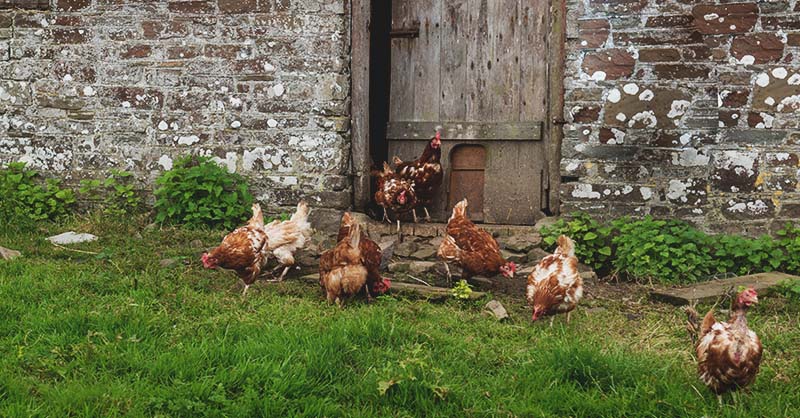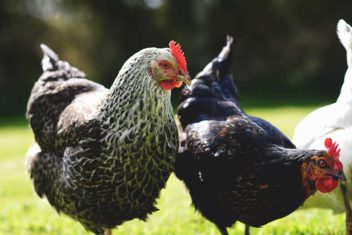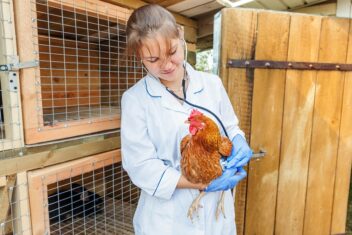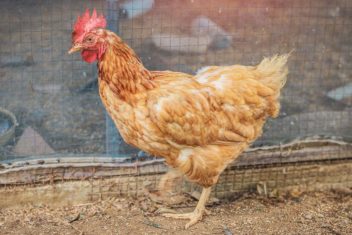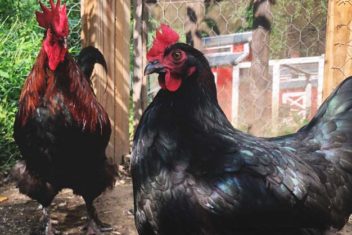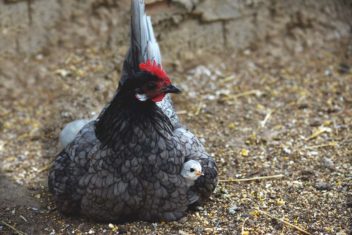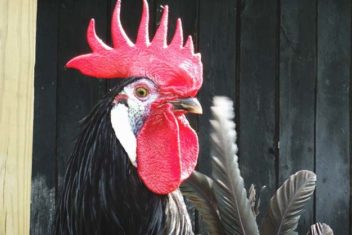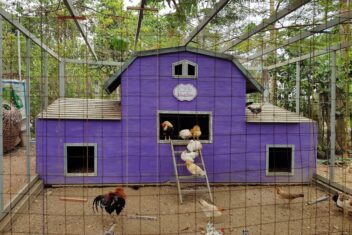When I first started chicken keeping, I didn’t realize how much raising chickens was like keeping a garden. By that, I mean there’s the routine daily maintenance like feeding, watering, and coop cleaning. That’s like the garden equivalent to weeding, watering, and fertilizing.
Then, there’s dealing with flock health and other challenges as they come up. That’s like fighting pests and pathogens in the garden. But there’s also this whole other part of flock keeping, that’s kind of like turning the garden from season to season.
One of these less regular aspects of raising chickens is flock rotation, where you have to introduce new chickens into your existing flock.
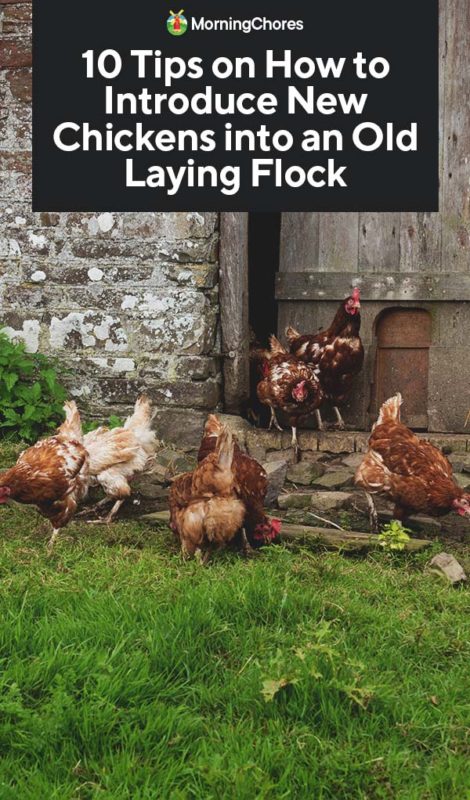
Why Chicken Flock Rotation?
Laying chickens, just like crops, time out. They produce heavily for a while. Then, as they age, their productive systems slow down too. Some chickens die young for various reasons. Others live on but don’t lay eggs anymore. Some keep on laying, but at such a low rate, it costs you more to feed them than what you get back in production.
If you have heritage breeds, they can have fairly good egg production for about 5 years. If you have production, commercial layers, they lay heavily the first two years and then experience egg-haustion. That’s because chickens can only produce so many eggs in their lifetime. Depending on their genetic background, they either produce a lot of eggs upfront or a more even amount over a longer period of time.
In either case though, there will come a time when you need to introduce new chickens to your flock to keep up egg production. Some people do it one fell swoop. They process their old chickens for stew meat and switch to their new laying flock.
Frankly, that’s about the easiest way to do it – especially if you have production layers like commercial white leghorn chickens. But, not all of us chicken keepers are ready to roast our older layers all at once.
Some of us prefer to introduce new chickens into our existing flocks and keep a mix of experienced layers and new layers together. I personally fall into the latter category. If you do too, this post is for you!
The Challenges when you Introduce New Chickens into an Old Flock
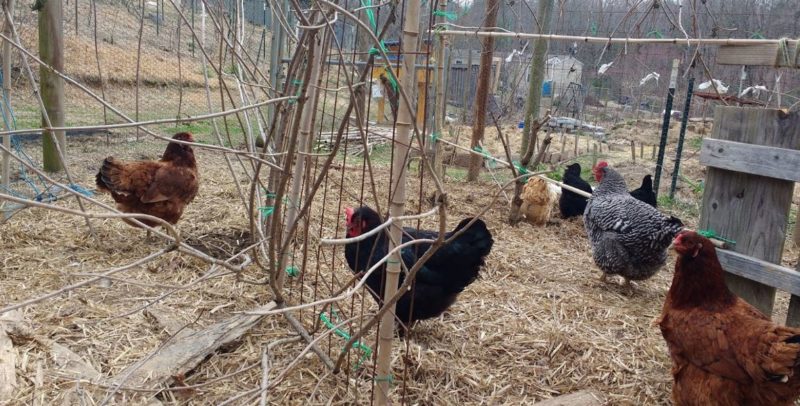
Before we look at some strategies for effective integration, let’s talk about the challenges. Laying chickens take roughly five months to get to the point of lay. Yet, even when they start laying, they may not be at their full body weight or have the confidence that comes from being an experienced layer.
Lacking Size and Confidence
As such, new layers are at a disadvantage over heavier, more experienced layers at the outset. That means they naturally start low on the pecking order.
Exploring New Territory
When you also consider that new chickens don’t know their way around the coop and run and need to get oriented for a few weeks before they feel at home, size isn’t their only disadvantage.
Facing Territorial Natives
Then, let’s add in the fact that chickens are also territorial and will fight to keep perceived outsiders from moving into their cozy coops and runs.
When you put all these factors together, it’s guaranteed to be challenging to integrate new chickens into an old flock.
10 Tips for Successfully Integrating New Hens into an Old Laying Flock
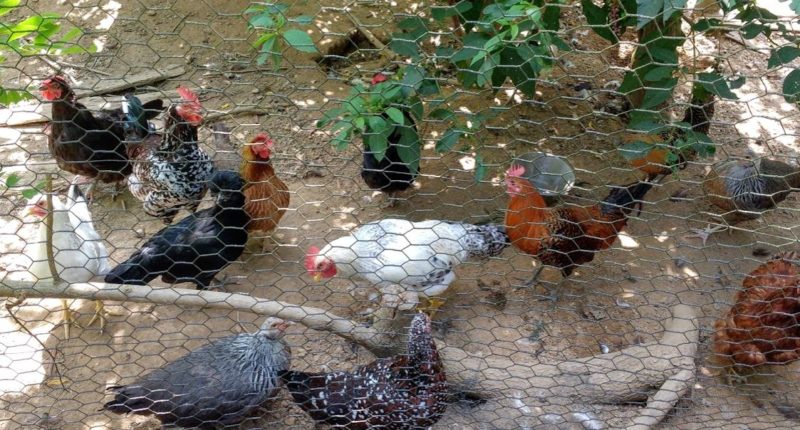
Absolutely none of the tips I am about to give you will change the fact that integration is never easy. That being said, there are ways to minimize stress to your old and new chickens, reduce the risk for injury, accelerate acceptance, and achieve harmony faster so you can get on with your dreams of idyllic homestead living.
Here are some strategies that have worked well for me.
Tip 1: The More the Merrier
I once tried to integrate three hens into a flock of twenty. Between my rooster raping them and most of my large hens bullying them, those three little ladies took quite a beating.
It didn’t matter that I gave them time to acclimate through a fence before introduction, or that I did it in the morning and spent the day watching and intervening for their safety. It simply didn’t work.
I ended up giving those ladies their own space until they sized up and a few more of my older girls timed out. Then, when the odds were a bit better, the integration went just fine.
Now, I aim to spread the abuse by adding large groups of new chickens at once. By adding as many new chickens as I have old in my flock, I even the playing field. Then, the bullying gets dispersed.
Rooster attention is also spread thinner. So new girls aren’t overstressed. Plus, those new ladies have a group of other hens to find solace with through those first few frightening weeks.
Tip 2: Rock the Rooster

I know you can’t always double your flock size just to integrate a few extra laying hens. But if you replace your rooster when you introduce new chickens you can use your new rooster to foster good diplomatic relations.
Now, you do need to get rid of your old rooster first. Or, your old rooster will try to kill your new rooster and that can be even more brutal than what hens do to each other. But, roosters need regular replacement too. So if its time anyhow, then you should definitely take advantage of this trick.
By raising my new rooster with my new girls, then introducing the new rooster to the old flock for a few days before I bring in the ladies, it creates a bridge between old and new. This works because when you remove a rooster, your flock is a bit confused.
So, they tend to be pretty welcoming of a new rooster to fill the vacancy. Then, your new rooster remembers those other girls. When you bring them in, the rooster uses his newfound power with the old girls to help make an easier transition for the new girls.
Roosters aren’t often known for diplomacy, but the great affinity for the flock he was raised with and his excitement over the experienced ladies in his company is a good motivator to keep the peace. Keep in mind this only works if your rooster is an alpha though. If your rooster is too sweet, those older layers will shred him too.
Tip 3: Be Breed Conscientious
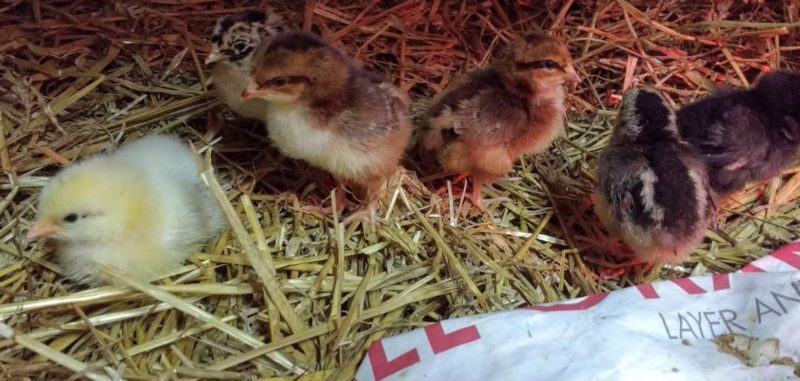
Some breeds are more territorial and hard to integrate with than others. Rhode Island Reds, Barred Rocks, Delawares, and Black Copper Marans tend to be more territorial than Buff Orpingtons, Lakenvelders, Australorps, Buckeyes, Silver Gray Dorkings, Speckled Sussex, and Creve Coeur.
Now, that’s just my experience. But if you use the online forums and read up on chicken integration, you can glean a lot of information about which breeds seem better suited to easy integrations.
If you plan to do this annually or every other year to renew your laying capacity, then focus on choosing chicken breeds that tend toward peaceful transitions.
Tip 4: Target Molting Season
Another strategy that has worked well for me is to move my new hens in when my old hens are molting. When hens are molting, they seem to be more reserved. I suspect their naked state and the energy involved in feather production make them feel kind of vulnerable.
I also think older chickens appear less intimidating to your non-molting first-year chickens when they look half-plucked. That seems to give new girls a bit more confidence in the face of adversity than being approached by a puffed-up egg-producing princess.
Tip 5: Integrate Late

I am always eager to integrate my new layers sooner rather than later so that I don’t have to maintain two coops. But, waiting until your new layers size up and maybe even start laying will set them up for more success.
There’s something in that hormonal switch between being a non-layer to being a layer that also seems to ignite the fighting spirit of a chicken. As their combs begin to redden and engorge, so does their gumption.
Tip 6: Use a Ruse
As I said earlier, you may not need to add 15 laying hens to your flock of 15 laying hens. But maybe you could throw in a few sacrificial meat birds to even up the numbers.
If you choose slower growing meat bird varieties like the Jersey Giant, Delawares, or Langshans you can time their processing for after your other layers are fully integrated into your old laying flock.
Tip 7: Timing Is Everything!
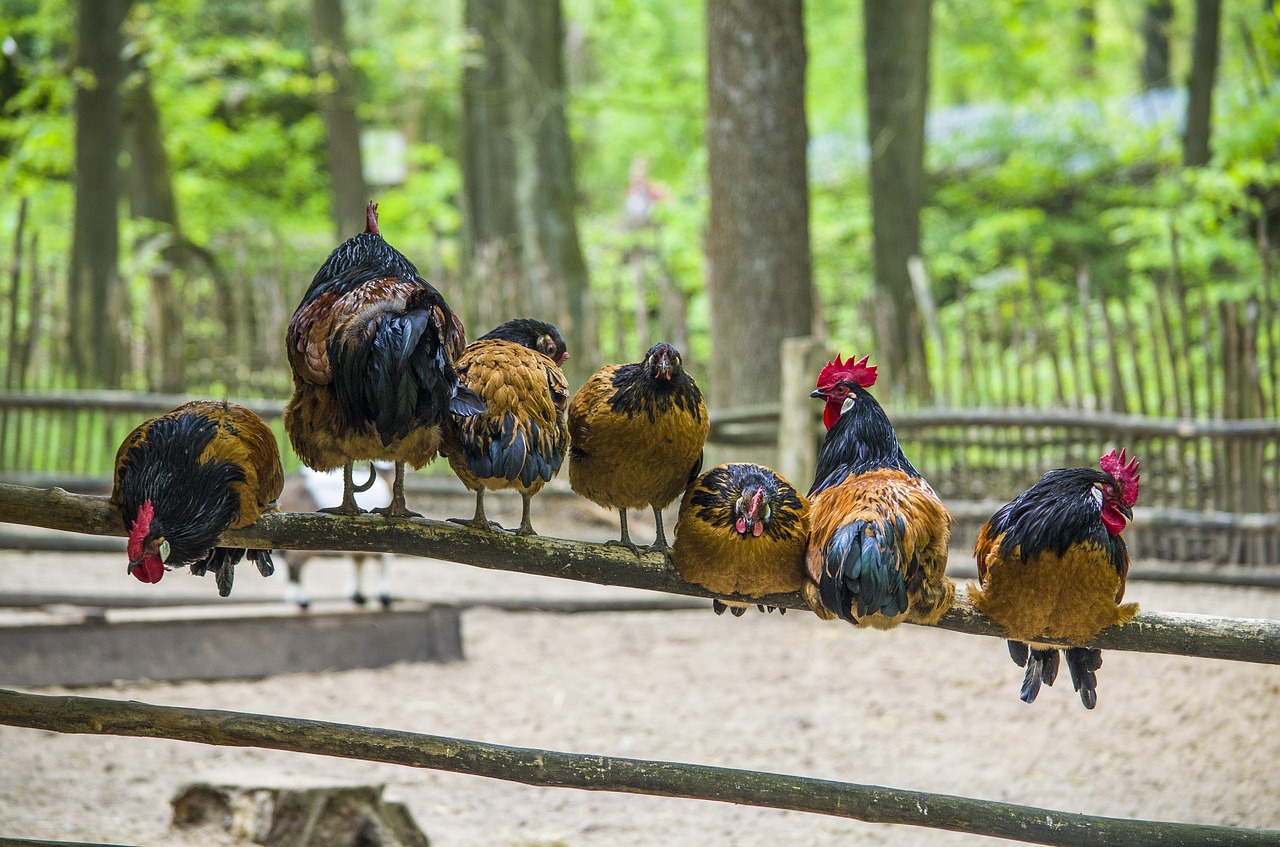
One of the things I often see in posts about chicken integration is that some people say to introduce birds into your coop at night so the chickens can acclimate while they roost. Other people say don’t do this because it can be a blood bath.
What I notice about these two perspectives is that each group is caring for chickens in different ways. The put them in at night crowd seem to have much larger coops and lots of roost space. The blood bath camp tends to have smaller coops. Also, the night crowd often let their chickens out to roam early in the morning, while the blood bath camp may just have small attached runs with automatic openers that open in full light.
Night Introductions
Frankly, if you have a large coop with lots of different roost areas for birds to isolate themselves, and you let your birds out early, then night time seems to be a perfect time for introductions. Just do it after dark when your old flock is already in place. Then, make sure to let everyone out early in the morning to limit disputes.
Daytime Introductions
If you have a small coop and aren’t as dedicated about opening your coop at dawn, then do introductions while you are present. You may even want to let your current flock out for a little free range time while you introduce new chickens into the coop and allow them to learn their way around. Then, when your old flock comes home to roost, your new chickens will know where to run for safety.
Tip 8: Overcompensate
You know those parents who buy their kids stuff to compensate for spending too much time at work or out of guilt for some other perceived failure? Well, take a page from their playbook just this once.
Overcompensate for the stress you are putting your flock under during this forced integration by putting feed and water containers all-around your coop and run.
By offering more food in different locations, you ensure that everyone gets to eat and that there’s less competition over perceived limited resources. Your chickens will likely burn extra calories by chasing or being chased. Also, water often gets spilled in chicken skirmishes, so keeping extra around ensures your girls all get access to quench their thirst after racing about.
Tip 9: Patience is a Virtue, Until it Isn’t
For the most part, as long as you have enough room in your coop and run, when adding right-sized chickens in good health to a flock that is also in good health, integration happens in a few weeks. Pecking order gets established, routines ensue, and harmony is eventually achieved.
In rare cases though, sometimes integration fails. Perhaps a chicken has a health defect that makes them more prone to pecking. Or, maybe you’re adding too many chickens to an already occupied space. If your chicken’s health is at risk from constant pecking and things aren’t calming down, then you need to take action.
You may need to cull older chicken to make room for new. You may need to re-home new chickens that just aren’t right for your flock. Or, you may need to offer alternate accommodations to misfits. Confined chickens do sometimes require intervention to ensure that your flock doesn’t run too wild.
Tip 10: Be Ready to Round ’em Up
New chickens are often reluctant to roost in the coop. You may find them trying to turn anything elevated off the ground into an alternate roosting space. So, give yourself a little extra time when putting chickens up at night to round up any missing chickens and safely settle them into the coop.
Leading Your Flock
If you are like me, your flock is family. You care about their well-being and it’s hard to watch them fight over what seems like silly non-problems. But, even if you treat your chickens like family, you need to accept that they still have their own customs and rituals that can be hard for us humans to understand.
With any healthy chicken flock, you will have to introduce new chickens from time to time, but it can be a perilous process. Here’re some integration tips.
Do what you can to make the transitions as stress-free as possible. Yet, unless a chicken’s long-term health is at risk, also make peace with the fact that chickens need to be allowed to be chickens.
